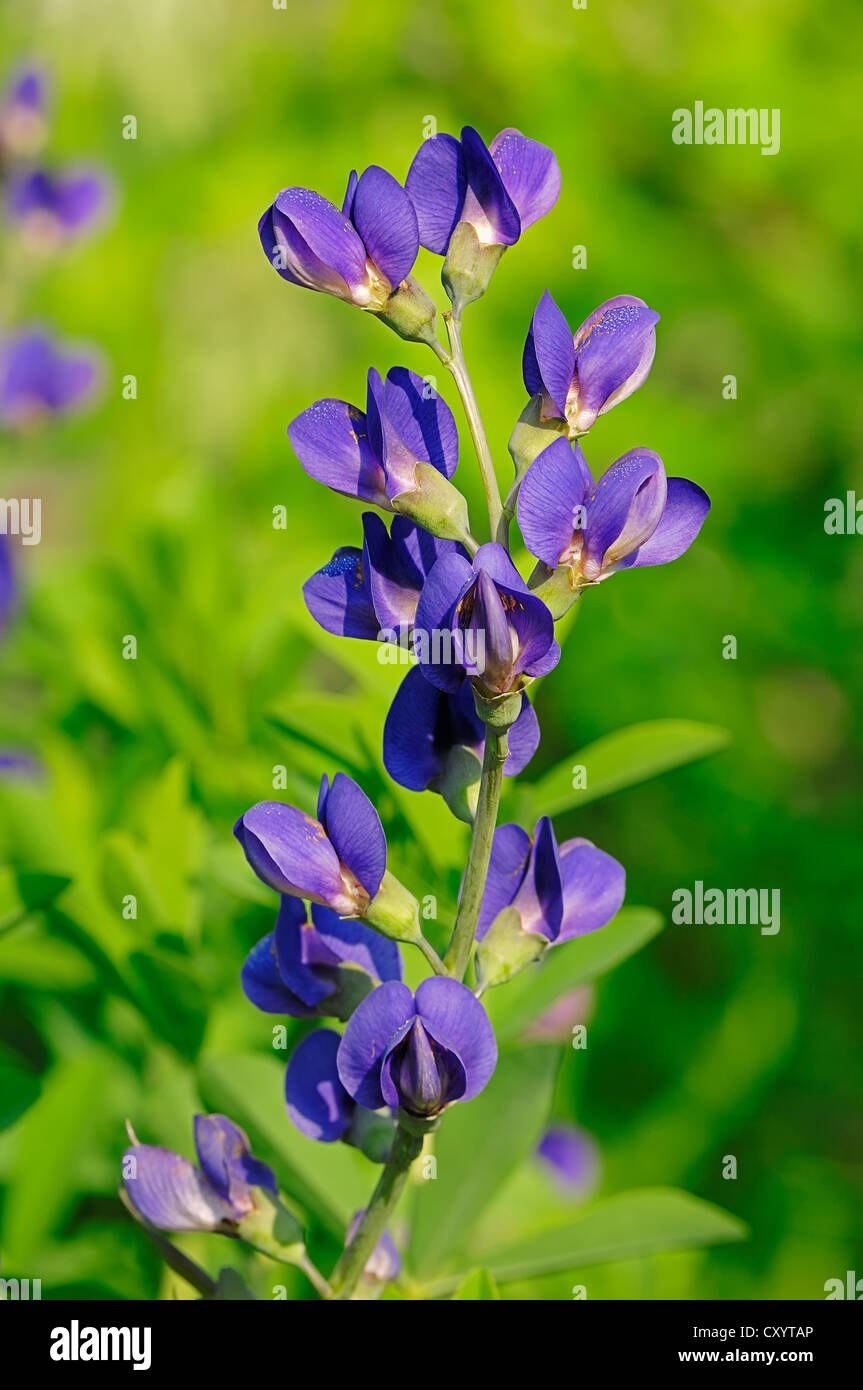
It is actually the plant’s leaves that are used to make the blue dye, though they are naturally green and must go through an involved extraction process first. Its called Rattleweed or Rattlebush, but we know it by Blue False Indigo Plant or Baptisia. Indigo Blue: Not Just a Dye - 6 Surprising Uses Most commonly recognized for its beautiful, distinct blue coloring, indigo has many uses beyond a dye for fabric. In the summer, it produces attractive pink or purple flowers.
#Blue indigo plant full
It prefersįertile, well-drained soil, moderate moisture, and full sun, except in very hotĬlimates, where it appreciates some afternoon shade.Ī medium shrub, the indigo plant will grow to 2 to 3 feet (61-91.5 cm.) in height and spread. Hardy in USDA zones 10 and 11, where it grows as an evergreen. In spring, this native to the North American prairies bears spikes of pea-shaped indigo blue flowers, resembling Lupines. As with other indigo varieties, however, it’s still an interesting addition to the home garden. Practically indigo dye is insoluble in water, aqueous acid or base and non-polar solvent. The general structure of the indigo dye is presented in Fig. Quick Info: 3.5 pot, Host plant to several different kinds of butterflies, beautiful blue flowers. These days, tinctoria indigo isn’t grown nearly as extensively, as it has been overtaken by synthetic dyes. With a distinctive blue color, indigo dye is an organic compound with the chemical formula of C 16 H 10 N 2 O 2 13, 26, 27. Plant Name: Wild Blue Indigo (Baptisia australis). Was a very popular crop in Colonial times. Handsome foliage and stunning flowers make blue wild indigo a plant with presence in a perennial garden or mixed border. Since been naturalized the world over, including the American South, where it Least 4,000 BCE, long before good gardening records were being kept. The plant is thought to be native to Asia or northernĪfrica, but it’s difficult to be sure, since it’s been in cultivation since at Which has been used for thousands of years. However, that gives indigo color, so named for the deep blue dye it produces, Genus of over 750 species of plants, many of which go by the common name Keep reading to learn more about growing indigo plants in your garden. A medium shrub, the indigo plant will grow to 2 to 3 feet (61-91.5 cm.) in height and spread. It’s still a wonderfully useful plant, however, and very much worth growing for the adventurous gardener and home dyer. In cultivation for millennia, it has fallen somewhat out of favor recently due to the invention of synthetic dyes. In Japan, indigo dyeing is known as aizome, and its popularity dates back to the Edo period (1603-1868), when brighter colors were reserved for the higher social classes. Tough, drought tolerant, and produces spires of flowers in late spring that last well into summer.

The showy, inflated black seed pods are used in both fresh and dried flower arrangements.īlue False Indigo (Baptisia australis) arrives in a 2.5" pot.Indigofera tinctoria, often called true indigo or simply just indigo, is probably the most famous and widespread dye plant in the world. Upright shrub like plant produces massive racemes of indigo blue flowers late spring thru fall. Decadence® Blueberry Sundae False Indigo Buy now from Proven Winners Baptisia australis. Once established, this long-lived perennial is drought tolerant and its attractive blossoms and foliage make it a fine subject for the flower border or wild garden. This species was noted by Williamsburg naturalist John Clayton in the early 18th century and listed in the catalog of Philadelphia nurserymen John and William Bartram in 1784.
#Blue indigo plant Patch
A patch of Baptisia australis in full bloom is a sight to behold. The native Blue False Indigo, introduced to Britain by 1724, was grown in early American gardens as a source of blue dye, to substitute for the costly true imported indigo. In late spring, blue to indigo pea-shaped flowers are held aloft on upright flower stalks. Description: Deep indigo blue, pea-like flowers in clusters above shrubby plants with bright blue-green foliageĬulture: Prefers part shade to full sun and moist but well-drained, moderately rich soilĪttributes: Drought tolerant, Attracts butterflies


 0 kommentar(er)
0 kommentar(er)
